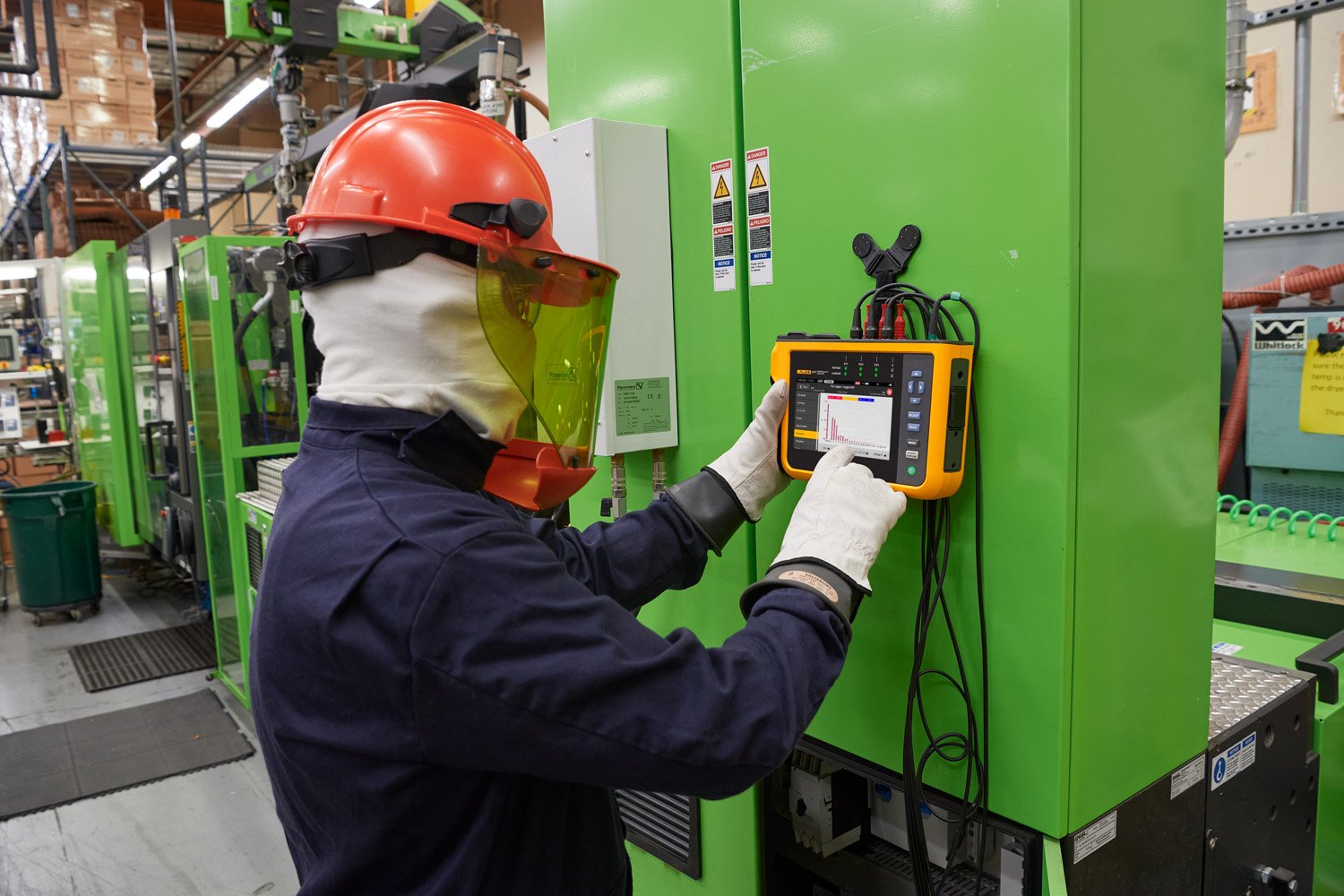
Fluke 1777 Power Quality Analyzer measures both single and three phase power
In electricity, the phase refers to the distribution of a load. What is the difference between single-phase and three-phase power supplies? Single-phase power is a two-wire alternating current (ac) power circuit. Typically, there is one power wire—the phase wire—and one neutral wire, with current flowing between the power wire (through the load) and the neutral wire. Three-phase power is a three-wire ac power circuit with each phase ac signal 120 electrical degrees apart.
Residential homes are usually served by a single-phase power supply, while commercial and industrial facilities usually use a three-phase supply. One key difference between single-phase vs. three-phase is that a three-phase power supply better accommodates higher loads. Single-phase power supplies are most commonly used when typical loads are lighting or heating, rather than large electric motors.
Single-phase systems can be derived from three-phase systems. In the US, this is done via a transformer to get the proper voltage, while in the EU it is done directly. Voltage levels in the EU are such that a three-phase system can also serve as three single-phase systems.
Single-phase vs. three-phase power
One other important difference between 3-phase power vs. single phase power is the consistency of the delivery of power. Because of the peaks and dips in voltage, a single-phase power supply simply does not offer the same consistency as a three-phase power supply. A three-phase power supply delivers power at a steady, constant rate.
Comparing single-phase vs. three-phase power, three-phase power supplies are more efficient. A three-phase power supply can transmit three times as much power as a single-phase power supply, while only needing one additional wire (that is, three wires instead of two). Thus, three-phase power supplies, whether they have three wires or four, use less conductor material to transmit a set amount of electrical power than do single-phase power supplies.
Difference between 3-phase and single-phase configurations
Some three-phase power supplies do use a fourth wire, which is a neutral wire. The two most common configurations of three-phase systems are known as wye and delta. A delta configuration has only three wires, while a wye configuration may have a fourth, neutral, wire. Single-phase power supplies have a neutral wire as well.
Both single-phase and three-phase power distribution systems have roles for which they are well-suited. But the two types of systems are quite different from each other.